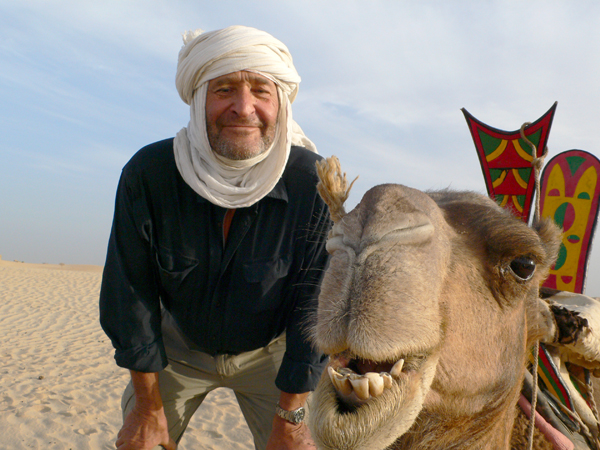|
Reviews of Recent Independent, Foreign, & Documentary Films in Theaters and DVD/Home Video

BAREFOOT TO TIMBUKTU Arguably, Avatar has, for better or worse, dominated the film landscape lately—the positive aspect, the visual spectacle; the negative, the film’s embodiment of the white man who comes into a native culture and fixes everything. Watching Barefoot to Timbuktu, one can’t help but marvel at the narrative parallel as Barefoot is this trope come to life. If people are sensitive to the colonialist narrative in Avatar, how can a documentary about a rich, white Westerner who intervenes in a native African village and imports Western ways be about the story and not the subtext? Swiss-American Ernst Aebi began his artistic career in the 1960s with very intricate surrealist drawings that were both horrific and slightly cartoonish, fitting for the social currents of the era. While Aebi made a nice living as an artist, he lost his fortune in a contentious divorce and custody battle. With four children to feed, Aebi began to renovate lofts in New York’s Soho—the first wave of gentrification to the area. This leads to affluence, existential laziness, and eventually the impulse to travel. On a trip to Mali in the late 1980s, he came across the destitute village of Araouane, and for three years he set about modernizing it, introducing farming, and modern irrigation. Due to a civil war, he was forced to leave, and the documentary shows his return to the village he basically built. It takes an artist to raise a village. This is the surface story—the subtext dominates. Aebi mentions that upon seeing Araouane, he said, “I could really make something out of this place.” He constantly refers to it as his “project,” and even yells at the villagers like children. Though there is this dimension of a Western invasion, it’s difficult to really condemn because Aebi arguably raises the standard of living, and the people of Araouane seem genuinely grateful for his help. At the same time, his efforts aren’t simply altruistic. Wealth brought a kind of opulent lethargy, and as Aebi grew more and more wealthy, he created less and less. Araouane is a project massive enough to awaken his creative side. However, he’s genuinely invested in the villagers’ lives. He has made friends, and he wants them to flourish. At its core, there is this great tension in Barefoot between narcissistic manipulation and altruistic colonialism. Sub-surface tension exists throughout the entire documentary. The interviews with Aebi’s children and second ex-wife are textbook things-left-unsaid, though mostly complimentary of Aebi. It isn’t what the people say so much as their attitude, the way they talk about Aebi, like politicians carefully marking their words. His children all seem shell-shocked to some degree. Aebi’s daughter, Tania, was working as a bike messenger in the late ’80s, and Aebi thought she was wasting her life, so he bought her a small boat and made her circumnavigate the globe. This is outright bizarre but treated in the film as merely a quirk. The tension between the hagiography of Aebi and these critical undercurrents make for a strange tone.
Overall, while generally sterile,
Barefoot to Timbuktu does have these interesting tensions inherent
within it. Though the tensions never erupt on the screen, they still
make for a weird and thoughtful documentary.
Andrew Beckerman
|

